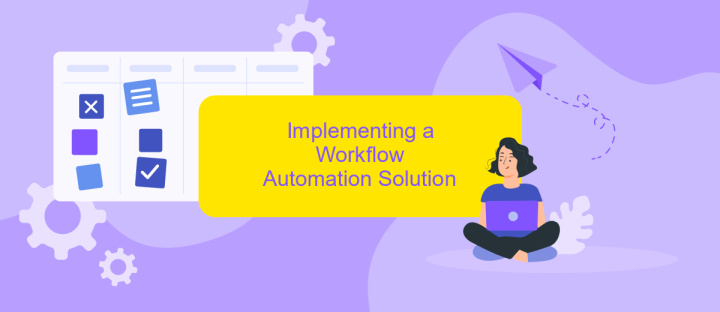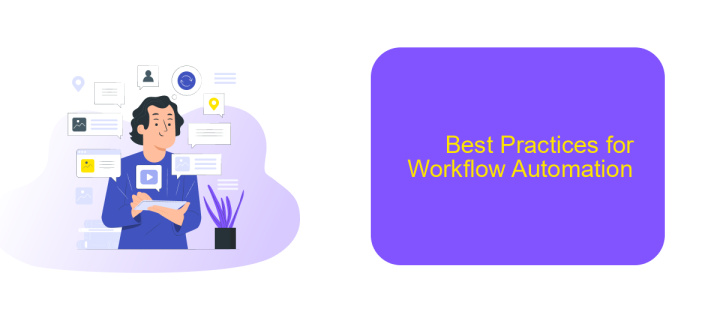Workflow Automation Solution
In today's fast-paced business environment, efficiency is key to staying competitive. Workflow automation solutions streamline and optimize repetitive tasks, allowing teams to focus on strategic initiatives. By integrating advanced technologies, these solutions enhance productivity, reduce errors, and improve overall operational efficiency. Discover how implementing workflow automation can transform your business processes and drive sustainable growth.
What is Workflow Automation?
Workflow automation is the process of designing, executing, and automating processes based on pre-defined business rules where human tasks, data, or files are routed between people or systems. This helps in streamlining and optimizing routine work, reducing the need for manual intervention, and enhancing overall productivity.
- Reduces human error and increases accuracy
- Speeds up processes and saves time
- Enhances transparency and accountability
- Improves compliance and audit trails
- Facilitates better resource management
Integrating multiple applications and services is a key aspect of workflow automation. Tools like ApiX-Drive simplify this process by allowing seamless integration between various platforms without the need for coding. This ensures that data flows smoothly across different systems, enabling a more efficient and cohesive workflow. By leveraging such tools, businesses can achieve greater agility and responsiveness in their operations.
Benefits of Workflow Automation

Workflow automation streamlines repetitive tasks, reducing the need for manual intervention and minimizing human error. This leads to increased efficiency and productivity within an organization. By automating routine processes, employees can focus on more strategic activities that drive business growth. Additionally, workflow automation ensures consistency and standardization across various operations, which enhances overall quality and reliability of outputs.
Another significant benefit of workflow automation is its ability to integrate with various tools and systems, creating a cohesive and interconnected work environment. For instance, services like ApiX-Drive facilitate seamless integration between different applications, enabling smooth data transfer and synchronization. This not only saves time but also ensures that all systems are up-to-date and working harmoniously. As a result, businesses can achieve better coordination, improved data accuracy, and more informed decision-making.
Implementing a Workflow Automation Solution

Implementing a workflow automation solution requires careful planning and execution to ensure seamless integration and maximum efficiency. The first step is to identify the processes that can benefit most from automation. This involves mapping out current workflows, pinpointing bottlenecks, and assessing the potential for improvement.
- Analyze and document existing workflows.
- Select the right automation tools and platforms.
- Integrate the chosen solution with existing systems.
- Test the automated workflows thoroughly.
- Train your team on the new processes.
- Monitor and optimize the workflows continuously.
For seamless integration, consider using ApiX-Drive, a service that simplifies the connection between various apps and services. ApiX-Drive enables you to automate data transfer and synchronize workflows without requiring extensive coding skills. By leveraging such tools, you can ensure a smoother transition to automated processes, ultimately enhancing productivity and reducing manual errors.
Best Practices for Workflow Automation

Implementing workflow automation can significantly enhance productivity and reduce manual errors. To achieve optimal results, it is essential to follow best practices that ensure seamless integration and efficient operation.
First, clearly define your objectives and identify the processes that would benefit most from automation. This helps in prioritizing tasks and allocating resources effectively. Next, choose the right tools and platforms that align with your business needs. For instance, ApiX-Drive is an excellent service for setting up integrations and automating workflows without requiring extensive technical knowledge.
- Map out your current processes to identify bottlenecks and areas for improvement.
- Ensure that your team is adequately trained to use the new automated systems.
- Regularly monitor and analyze the performance of automated workflows to make necessary adjustments.
- Maintain a backup plan to address any potential failures or system downtimes.
By adhering to these best practices, businesses can maximize the benefits of workflow automation. Continuous evaluation and optimization will ensure that the automated processes remain aligned with evolving business goals and technological advancements.
Case Studies and Success Stories
One of our clients, a mid-sized e-commerce business, experienced a 40% increase in operational efficiency after implementing our workflow automation solution. They were able to streamline their order processing and inventory management, significantly reducing manual errors. Using ApiX-Drive, they seamlessly integrated their CRM, email marketing, and accounting software, allowing for real-time data synchronization and more effective customer relationship management.
Another success story comes from a healthcare provider who automated their patient appointment scheduling and follow-up processes. By adopting our solution, they reduced administrative workload by 30%, enabling staff to focus more on patient care. The integration capabilities of ApiX-Drive played a crucial role, connecting their appointment system with email and SMS notifications, ensuring timely communication with patients and minimizing no-show rates. These improvements not only boosted their operational efficiency but also enhanced patient satisfaction.


FAQ
What is workflow automation?
How can workflow automation benefit my business?
What types of tasks can be automated?
How difficult is it to implement workflow automation?
What should I consider when choosing a workflow automation tool?
Routine tasks take a lot of time from employees? Do they burn out, do not have enough working day for the main duties and important things? Do you understand that the only way out of this situation in modern realities is automation? Try Apix-Drive for free and make sure that the online connector in 5 minutes of setting up integration will remove a significant part of the routine from your life and free up time for you and your employees.

